Picking number 13 in the 2020 MLB Draft, the San Francisco Giants are in an interesting spot. It’s early enough that the field of potential picks is pretty well set. But it’s far enough back in the draft for it to not be obvious exactly who they’ll pick. So when the Giants pick on June 10th, there’ll be a little surprise in it, unlike the picking of Joey Bart in 2018.
So let’s take a look at the names commonly associated with the Giants in the last few months of mock drafts and predictions, and my personal, probably stupid opinions I have about whether I’ll be happy or not about the pick.
Allow me to stress that what I’m saying here is whether or not I’d like the pick, not whether I’d like the player. All these guys seem like good kids and I’d absolutely be rooting for them. These feelings are based more about the value I’d feel they could get (or get elsewhere) at the #13 pick in the draft.
Who I Would Like
Mick Abel, RHP, Jesuit High School (OR)
Rankings: Fangraphs-#9; Baseball America-#11; MLB-#11
There was one mock draft cycle where almost all of them had the Giants were picking Mick Abel, a rare aligning of predictions for a pick outside of the top 5 in baseball drafts. Abel has a lot of things to like. He’s 6’5 with a build that should put on muscle, and sits in the mid 90’s with his fastball and velocity that goes up to 97. He has two good secondary pitches already, a slider and a changeup. He has some of the best command among high school players. And he gets high marks for his makeup. There’s no standout quality, but that’s more because there’s a lot to like.
Why are some not as high on him? Well, the biggest is a fairly recent bias in drafts that high school right-handed pitchers are the riskiest picks to make in the draft, which is generally true. That isn’t to say all are bad. Matt Cain worked out pretty well, and there are many exceptions, as you’d expect for any rule. But when it comes to the chances of being an exception, Abel has many qualities you’d like. That’s why there is a solid chance he may not even be there at #13.
Why I’d Like It: Some like the upside of velocity, I get it. But the harder the velocity, generally the more risk, from injury and command. And hey, I was big on Ray Black because he was nasty as heck with his velocity (I still am, just he won’t be that for the Giants). But I really like the combination of what Abel has coming into a pro career. Add in that the Giants system is lacking in top-of-the-rotation pitching talent, and that you’re unlikely to find that in the second round…Hey, I want it, even if you don’t draft for need. That’s just the bonus.
Garrett Crochet, LHP, Tennessee
Rankings: Fangraphs-#23; Baseball America-#15; MLB-#18
Crochet initially comes across with a body type and throwing angle that is a little reminiscent of Madison Bumgarner, but he is a very different pitcher. Right now, he has a plus-plus fastball that used to sit 91-95 but over last fall started to nudge up to 96-100, and has high spin on it. He also has an above average slider, and an inconsistent but promising changeup. His control is average, as one might expect for a pitcher with his velocity and throwing angle.
The downside for Crochet comes to track record and injuries. He doesn’t have much of a track record as a starter to go by, so there’s a lot of unknowns, and his new velocity is a relatively new feature. The start of his college season this spring was also delayed by shoulder soreness, which is a definite red flag. There’s a reasonable risk of him becoming more of a 2-pitch reliever than a starter as well.
Why I’d Like It: Obviously, Crochet is a risk-reward kind of draft pick. But this is an intriguing reward. There’s a real possibility that Crochet’s stuff is the most overwhelming in this draft, and he has the best shot to be a dominating ace (as opposed to just a good ace). But the falloff is huge as well, down to being a reliever (which, even if he were a closer, would be a bit of a disappointment) or even never making it. But I like this risk, and I’d like to see him in the system.
Cole Wilcox, RHP, Georgia
Rankings: Fangraphs-#18; Baseball America-#24; MLB-#23
In early mock drafts, Wilcox had been closer to the top 15, but he’s fallen more recently, more to others who have risen. A younger college pitcher, a draft-eligible sophomore, he has a mid-90’s fastball that can touch 100, but also has plenty of movement. His power slider and fading changeup are not yet plus deliveries, but they both show the potential to be.
A big question for him has been his command, which was a problem in his freshman year, but in the pre-Coronavirus shortened college season, he walked just two in 23 innings and was showing promise. He also doesn’t have much deception in his delivery, though the movement he has makes up for it to a degree.
Why I’d Like It: Wilcox doesn’t have true ace potential, but if his command improvements are to be believed, he could become a #2-3 pitcher. There is some risk with him there, and at #13, he’s looking more like a reach than he would have been early in the draft cycle. But I still like what he brings, and I see less, and less scary risk than others.
Pete Crow-Armstrong, OF, Harvard-Westlake HS (CA)
Rankings: Fangraphs-#26; Baseball America-#17; MLB-#20
Among prep outfielders in this range, there are different tools that stand out for each. Crow-Armstrong’s standout tool is his defense, where he’s likely to stick in center field with plus speed and a plus arm, as well as being praised for his baseball instincts. That gives him that premium defensive position that would play well in Oracle Park and the NL West. He also has a good hit tool, and while he was striking out a bit over last summer, he makes good hard contact and has the speed to get extra bases.
The major risk in Crow-Armstrong is the power, but there’s an opportunity for some reward there. Scouting reports seem split on his future power, with some seeing it as below average, but others seeing some strength developing into average power that he did not get to show off with 2020 being shut down. As a center fielder, he wouldn’t need to be a slugger to be an everyday player, but getting to average power and playing off of Oracle Park’s quirks to run around the bases would make him very valuable indeed.
Why I’d Like It: Speed and defense are things I like a lot. There are two true center fielders that the Giants might be able to get in this draft, and I tend towards Crow-Armstrong because he needs less of a swing overhaul, even if his speed tool isn’t as outstanding as the other CF, Garrett Mitchell. And though the Giants have plenty of future corner outfielders, they are missing a true center fielder in the farm, so this outfielder would fit nicely in the Giants future.
Who I Wouldn’t Like:
Cade Cavalli, RHP, Oklahoma
Rankings: Fangraphs-#17; Baseball America-#22; MLB-#22
Cavalli has been a bit of a late-riser in the draft boards, and it is easy to see why. He’s another college pitcher with a prototypical big body, mid-90’s velocity that touches high 90’s. He has one of the best breaking pitches in this draft, with a hard-breaking slider that is a true out pitch. He has a changeup that he needs to get control with, and a curve that is in need of developing as well.
Cavalli’s biggest problem is his injury history. He missed a lot of time in high school with back issues, and had a stress reaction in his arm last year. He also has an issue with command, which isn’t great for a delivery that’s already very clean. That is something that also leads to him giving up more hard contact than one might expect, as he begins grooving pitches to the strike zone.
Why I Wouldn’t Like It: He’s the prototypical pitcher. He throws from the perfect arm slot. Which means, he has no deception. That, with a fastball that is as straight as possible, there is little deception. Even throwing 98 MPH, many major leaguers can hit a straight 98. Without the command to put it where he wants in the zone, he gives up hits. I look at him, and I see a lot of the problems that Beede has had in his development. Cavalli could become a good pitcher, but it’d take a lot of work, but I don’t see him growing into the dominating pitcher that others would.
Nick Bitsko, RHP, Central Bucks HS (PA)
Rankings: Fangraphs-#16; Baseball America-#19; MLB-#14
Nick Bitsko is one of two names that is repeatedly directly connected to the Giants as the team does its checks. And that’s important here. Bitsko is another high school right-hander, and he checks a lot of boxes. He has another big frame, and throws solidly in the mid-90’s right now with some upside. Unlike Abel’s all-around skills, Bitsko has two plus pitches right now, with the fastball and curveball, but without a third pitch right now. His command has a chance to be plus command in the future as well, though it’s not right now.
One of the big reasons Bitsko is lower on the list than other pitchers is that he didn’t get much of a chance to show off his stuff in 2020 before the pandemic hit, and that lack of traditional scouting has made his placement in lists and mock drafts very difficult. But remember, the Giants have been connected to him specifically. That means that it’s likely the Giants have been doing more homework on him, even if no one can visit and see him first hand. If they do like him, it’s likely because they have seen something that others haven’t as he’s one bullpens and thrown this spring.
Why I Wouldn’t Like It: Bitsko has a lot of upside, similar to the other pitchers in this class. I have worries about Bitsko, though, because there’s some downside here as well. His downside isn’t pure bust, there’s a lot of reliever one could see in him, similar to Crochet. But a right-handed prep pitcher has more of that risk than an established college lefty does, and that risk scares me a bit.
Ed Howard, SS, Mount Carmel HS (IL)
Rankings: Fangraphs-#11; Baseball America-#20; MLB-#15
Ed Howard is a rarity among draft prospects listed as shortstop: he’s a no-doubt future shortstop. He’s praised for his footwork and his arm, and there’s little development that he needs to stay there. That alone is a big thing, to be able to play and stick at a premium position. That alone gives him the inside track at being a major leaguer one day.
The bigger question is on the offensive side. He’s got an above-average hit tool, and although he has good batspeed, he could develop to get to average or above average power. He also has slightly above average speed, but is not a burner. The profile doesn’t show a top offensive player, though he could be one that will hit enough for his defense to carry him.
Why I Wouldn’t Like It: Defense is something I like, but at #13 overall? The Giants have one shortstop in the system likely to make the majors, but few people believe Marco Luciano will stay at the position. Howard would be an asset there. If the Giants were picking in the 20’s, I’d like him more. But would he be enough of a hitter to justify being the #13 overall pick? That is a tough call. In the end, the Giants have enough needs for depth in many places that other players that should be available will likely have more impact.
Reid Detmers, LHP, Louisville
Rankings: Fangraphs-#10; Baseball America-#8; MLB-#8
Detmers fits a classic pitchability profile, with a subpar fastball around 92, but excellent control and a big curveball which Fangraphs calls “arguably the best pitch in the entire draft.” He dominated in Louisville, racking up strikeouts and not walking many to lead his profile and make him look like one of the best college starters in this draft. He is also praised for his competitive nature and makeup on the mound.
Where the questions reside fall into two categories. The first is how his stuff will play up in the majors. Dominating college ball with two primary pitches and low-90’s velocity is one thing, doing it in the Majors is another. He needs to at least further his changeup to keep starting. Also, he has a tendency towards fly balls, which could be troubling as stronger hitters make contact against him.
Still, Detmers is healthy, smart, and has tools to play with. He’s a low-risk prospect, likely to make the majors, but he’s also low-ceiling, likely to make it as a mid-rotation starter at best.
Why I Wouldn’t Like it: I’ve tended to like pitchability guys in the past, and still do. I was iffy on him early on, but our good friend Roger Munter’s interview with Matt Collier, the creator of FaBIO (Fielding and Ballpark Independent Outcomes) really changed my opinion here. That extreme fly ball profile is troubling, even in the big parks, and I think there’s more risk here than others see. I also see numbers that were trending the wrong way in his last college season, numbers that would’ve made him slide if they continued for a full season. There’s a good chance he’s off the board by the time the Giants pick anyway, so I’m kind of hoping he is, so the Giants don’t need to try to deal with that conundrum.
Robert Hassell, OF, Independence HS (TN)
Rankings: Fangraphs-#15; Baseball America-#16; MLB-#16
Nearly everyone agrees that Hassell’s bat is one of the best in the high school class, with a sweet left-handed swing and the ability to get good contact easily. He hits the ball to all fields, and rarely swings and misses. That’s a rare tool, and often the lack of that ability sinks other prospects.
Hassell doesn’t have elite tools in most other categories, however. He’s a center fielder now, though he’s likely a corner outfielder without the footspeed that a center fielder needs. He does have a good arm, and could play right field. While he has a great eye, he doesn’t have elite batspeed, and scouts are split on his power potential.
Why I Wouldn’t Like It: Is the bat-to-ball skill enough? I love a disciplined hitter, but a lot hangs on how his hitting will develop into power. If he doesn’t develop it, Hassell has a bit of a tweener feel. I’ve been a fan of those tweeners in the past, but it feels different with Hassell. And while the cardinal sin in a draft is looking at anything other than the best available player, two of the Giants last three first round picks are corner outfielder, both of whom profile as more complete players than Hassell, and one of whom has a good track record. If this were the 2000 or mid 2010 Giants lacking in outfield prospects, I’d be more positive towards Hassell, but right now? I’m afraid I’d rather see others.
Who I’m Unsure About
Tyler Soderstrom, C (sorta), Turlock HS (CA)
Rankings: Fangraphs-#21; Baseball America-#18; MLB-#19
No name has been connected to the Giants more than Soderstrom, whose father was picked #6 overall by the Giants in 1993. There’s no doubt that the Giants are scouting him heavily. Soderstrom is listed as a catcher, but few seem to think he’ll stay there, and different prognosticators see him as a corner infielder or outfielder.
The carrying tool is his hitting. He has a very good hitting approach, and has doubles power to all fields right now, with scouts seeing raw power that he could continue to get into as he grows. He excites a lot of people with his hitting ability, and MLB notes the “loud contact” that he can make.
Why I’m Not Sure: Okay, let’s get into this. At first, I was worried about his willingness to move positions, as Baseball America noted he had “the passion to catch,” but he posted a video of himself taking grounders, so that convinces me he’s either willing or at least open to the move.
So let’s talk about his future position. Playing first isn’t ideal, with him being right handed. It’s not a dealbreaker, but it’s not ideal. What about the outfield? Well, it depends on the scouting report you see. MLB grades him as a 50 runner, but Baseball America graded him at 30 in their catcher spotlight. A 30 runner would not be ideal in a big outfield, or in a division with four huge outfields. So that leaves third base.
The video above that he posted shows a raw third baseman. Aside from the easy grounders he’s taking, on almost all his throws, he’s taking a lot of extra hops. That’s not ideal. He does have a few throws where he doesn’t, mostly at the end, but again…not ideal. Sure, he’s got years in the minors to get habits like that coached out, and that can happen.
But we’re talking a first round pick. Is his bat, which also needs to grow, enough to carry him through all the adjustments and the learning he needs to do? Is taking a player with this many adjustments in his future the right pick when there will be a lot of other very talented players who won’t need such changes at the same level?
And also, remember, not everyone thinks that Marco Luciano will stick at shortstop. A lot of people think his future position is third base.
I just…am not convinced. Clearly, there are things to like about Soderstrom. I just don’t see enough to like him as much as others who should be available.
Garrett Mitchell, OF, UCLA
Rankings: Fangraphs-#14; Baseball America-#6; MLB-#6
Mitchell represents an interesting conundrum. A regular thing that has been said about him is that he has potentially the best mix of tools in the 2020 draft class. He’s the #6 ranked player in two of the major draft rankings. So why does he keep showing up in mock drafts in the late teens?
Mitchell’s selling point is a 70-80 rank in his run tool, which both makes him a potential threat on the basepaths, and a true center fielder. He can hit as well, currently looking like a line drive gap hitter, which is not a bad thing for a speedster. A bigger question is his in-game power, which he has had trouble unlocking, and he’ll have some swing changes he’ll need to make as a pro.
Aside from needed adjustments, Mitchell has one other complication, that some are making a big deal about. He has Type I Diabetes, which some teams seem to be worried about. This isn’t anything new for the Giants, who previously developed Adam Duvall, another player with Type I.
Why I’m Not Sure: Look, I love me some speed. I think it’s an underrated tool teams can take advantage of. And while the Giants have a few prospects who currently play center field (Heliot Ramos, Hunter Bishop, Alexander Canario), none seem like long term center fielders, while Mitchell is a sure-thing in center. But…there’s still uncertainty I have about the swing adjustments. The Giants have never done well at that, and while this is a new Giants regime, it’s not an easy thing. I would be cautiously optimistic, but that’s a lot of cautious.
Austin Hendrick, OF, West Allegheny (PA)
Rankings: Fangraphs-#13; Baseball America-#9; MLB-#13
Austin Hendrick has the best power, by far, among the high school hitting class, and that is the carrying tool for Hendrick. He’s got power ranking between 60 and 70, and that’s clearly something to really love about him. The power comes from his rotation, and the batspeed he generates, so his power should be legitimate as he rises. He’s probably a future corner outfielder, but his arm strength is good enough for right field if he goes there.
Where there are questions about his hit tool, however. He was tinkering with his swing last summer, and it led to some hit and miss problems, which are not uncommon among power prospects anyway. A big part of his chances are about getting enough of the hit tool unlocked to get to that power.
Why I’m Not Sure: There are lots to like about Hendrick…and well, you can’t teach power. But it’s also easy to get overly-enamored with a big power tool and simply miss other holes, and especially the ability to hit enough to make that power worthwhile. It’s more in vogue than ever to be a high strikeout/high power sort of player, but I’m not sure that following the trend is ideal. That, and the Giants currently having more than a few future corner outfielders, make me wary about this pick.
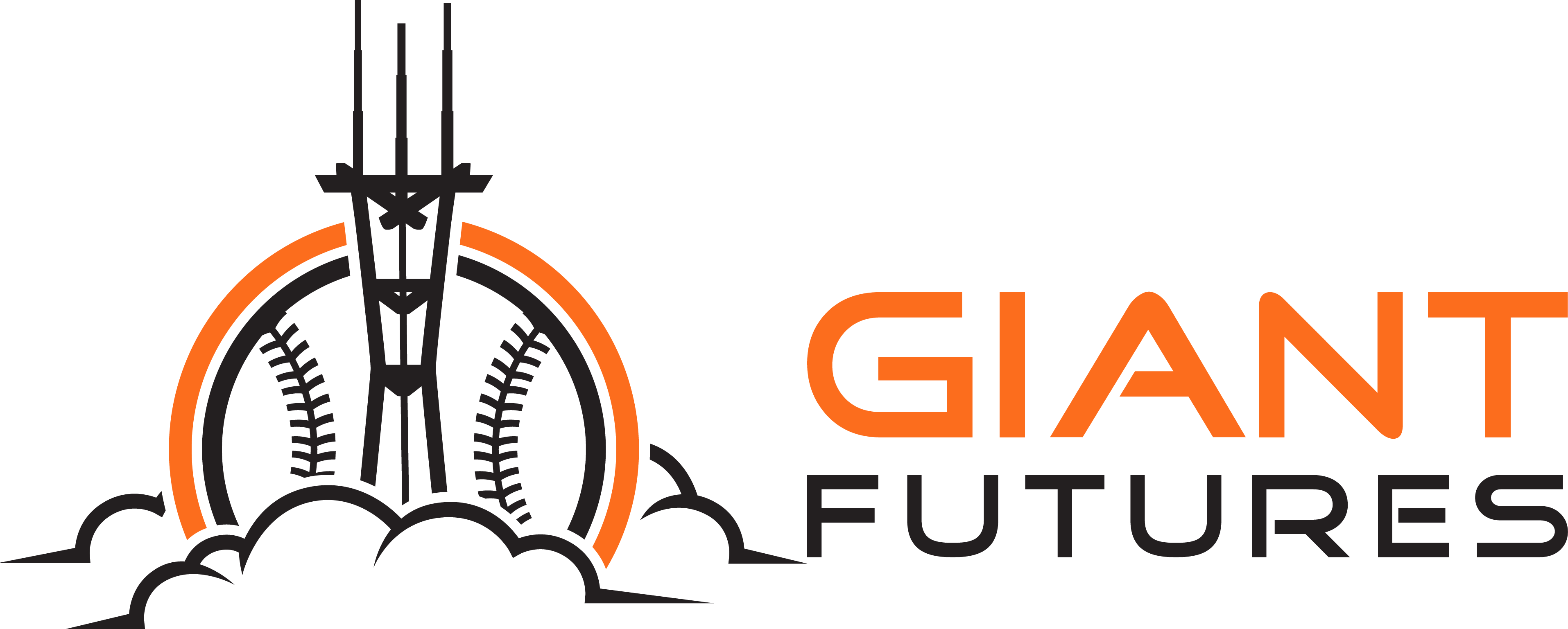

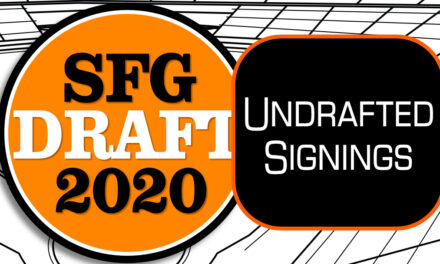
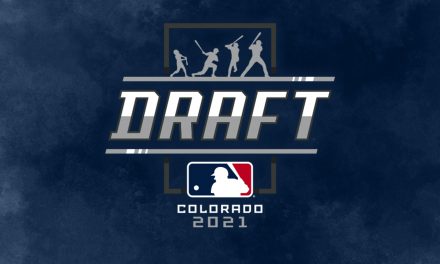
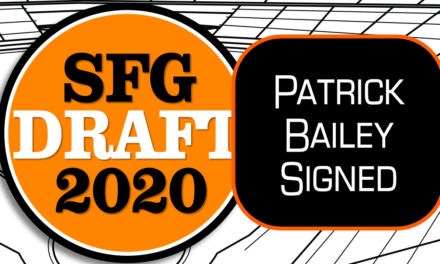
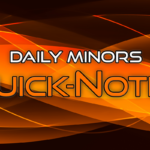
Recent Comments